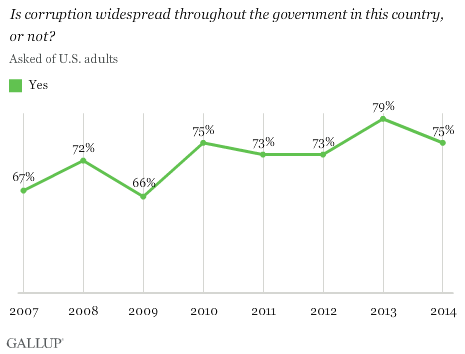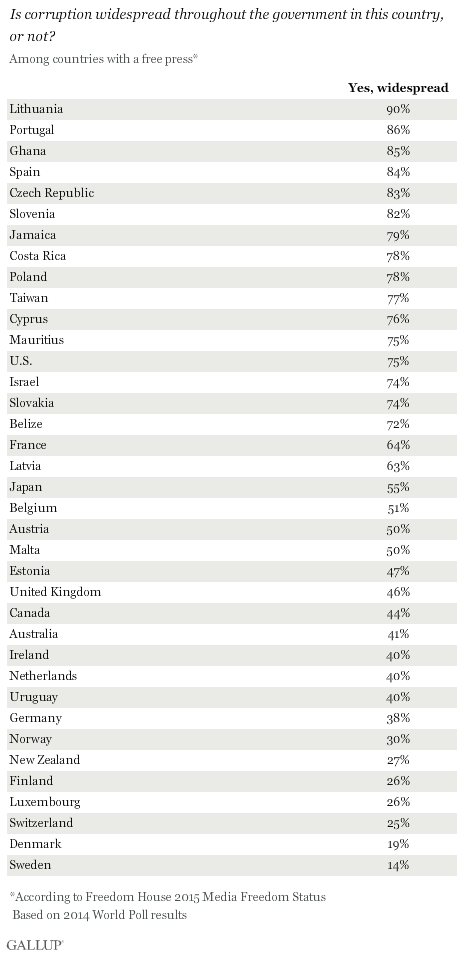75% in U.S. See Widespread Government Corruption
By Gallup
September 20, 2015 "Information
Clearing House" - "Gallup"
- WASHINGTON, D.C. -- Three in four
Americans (75%) last year perceived corruption as widespread in the
country's government. This figure is up from two in three in 2007
(67%) and 2009 (66%).

While the numbers have fluctuated slightly since
2007, the trend has been largely stable since 2010. However, the
percentage of U.S. adults who see corruption as pervasive has never
been less than a majority in the past decade, which has had no
shortage of controversies from the
U.S. Justice Department's firings of U.S. attorneys to the
IRS scandal.
These figures are higher than some might expect,
and while the lack of improvement is somewhat disconcerting, the
positive takeaway is that Americans still feel fairly free to
criticize their government. This is not the case in
some parts of the world. Questions about corruption are so
sensitive in some countries that even if Gallup is allowed to ask
them, the results may reflect residents' reluctance to disparage
their government. This is particularly true in countries where media
freedom is restricted.
This is why it is most appropriate to look at
perceptions of corruption through such lenses as the Freedom House's
Press Freedom rankings. Ratings vary among countries with a "free
press," including the U.S., and range from a high of 90% in
Lithuania to a low of 14% in Sweden. The U.S. does not make the top
10 list, but notably, it is not far from it.

These data are available in
Gallup Analytics.
Survey Methods
Results are based on telephone interviews with
approximately 1,000 U.S. adults each year, aged 15 and older,
conducted between 2007 and 2014. For results based on the total
sample of national adults in the U.S., the margin of sampling error
has typically been ±4.0 percentage points at the 95% confidence
level.
For results based on the total sample of national
adults across the 134 countries surveyed in 2014, the margin of
sampling error ranged from ±2.1 percentage points to ±5.6 percentage
points at the 95% confidence level.
The margin of error reflects the influence of data
weighting. In addition to sampling error, question wording and
practical difficulties in conducting surveys can introduce error or
bias into the findings of public opinion polls.
For more complete methodology and specific survey
dates, please review
Gallup's Country Data Set details.